
|
Lumix G II 20/1.7: a Small Wonder Image Samples on Olympus E-M1 Mk.II |

|
My other articles related to the |
|
People are saying very good things about the Lumix G II 20 mm F/1.7 "pancake" lens by Panasonic. During a recent family reunion in Łódź, Poland, I was able to try it for a few days. Being out of home, I couldn't use my regular lens evaluation scene setups; still, here are some image samples. The camera used was the E-M1 Mk.II in Natural Picture Mode with sharpness and contrast at -1, noise filter at Low. WB at Sunny, IS on at Auto, no tripod. Autoexposure: pattern (ESP) metering, Aperture Priority at apertures as shown and ISO 200, with resulting shutter speeds from 1/5000 s to 1/50 s. While I was bracketing the exposure, those with no adjustment were selected for presentation. The scene shows the outskirts of the Polish city of Łódź, as seen from a seventh-floor apartment balcony. At first, I was skeptical of this choice, but after reviewing the trial frames I started to like it: lots of diverse detail. I may keep coming back to it in the future. Around the frame at F/2.8 First, to get a general idea how good is the 20/1.7 in rendering of fine detail, here is just one image, shown for reference in a reduced size (clickable: full size), followed by five 1:1 sample fragments, selected at varying locations around the frame. (You may also want to inspect the full original frame, or one with sample areas marked, which was saved at somewhat higher compression.) The aperture of F/2.8 was selected to provide enough stopping down for the wide-open flaws to go away. For a good lens, 1.3 EV should be enough. (Other apertures will be shown in the next section.) |
| Lumix G II 20/1.7 at F/2.8; exposure of 1/2000 s | ||
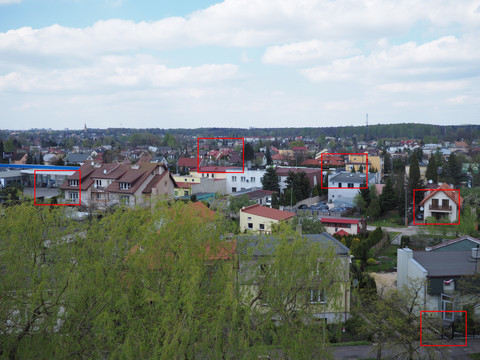
Whole frame, reduced |
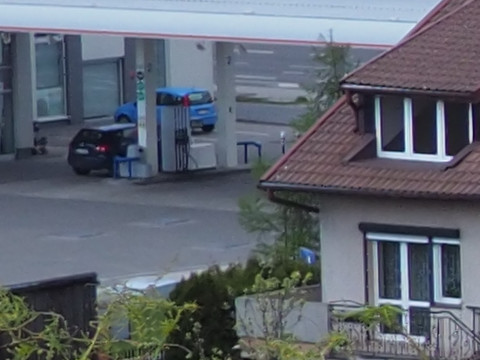
[1] | |
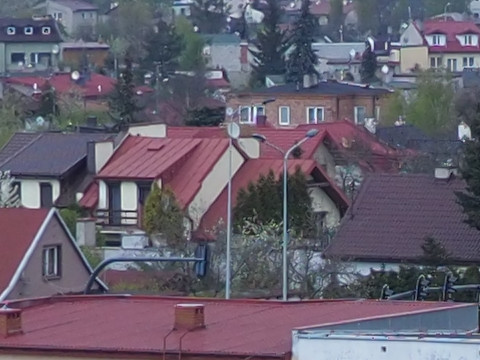
[2] |
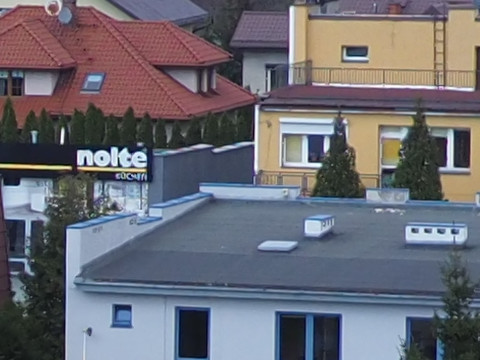
[3] | |
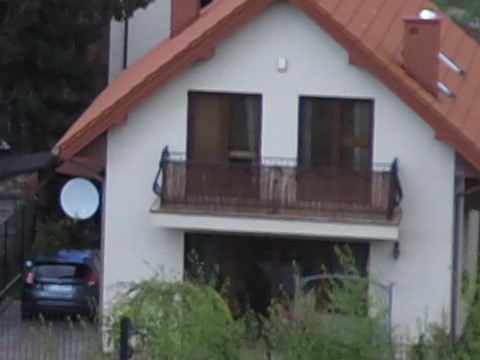
[4] |
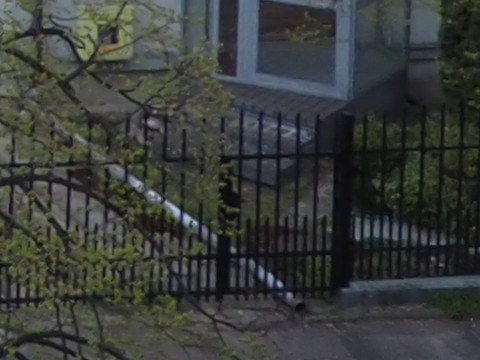
[5] | |
|
A brief inspection of this single shot was enough to make me a believer. The amount of detail crammed into a 20 MP frame is most impressive. Even the corner sample [5] shows very little softness, while the centrally located [2] and [3] are close to perfect — for this pixel resolution. The right-edge sample [4] may look worse at the first glance, but this is a false impression, caused mostly by some netting woven into balcony railing, making it look fuzzy. (What looks like a double contour at the left edge of the white wall turns out to be a gutter pipe.) There is, however, some detail loss in the red roof. Anyway, we are dealing here with the top-league player, enen more impressive for a pancake lens retailing for $270 or so. Compared to the MZD 12-10/4.0 PRO Without any real test facilities, a good way of judging a lens is a side-by-side comparison with a lens of known quality. Fortunately, I had this Olympus lens with me on this trip. While not a prime, it is about as good as zooms come, so I decided to match it against the 20/1.7 over the whole available aperture range. |
|
First of all, a very slight vignetting visible at F/1.7 is almost gone at F/2 (!) and not a problem at all. Very nice. Secondly, the performance is respectable starting wide-open, even if it keeps visibly improving up to F/4.0 — check the red roof shingles. At F/4 both lenses are very close, but the PRO seems a little bit sharper (see shingles again); this may be just my subjective impression. Compare the white-lettered sign: here I can't tell the samples apart. This pattern repeats itself at F/5.6 and F/8. At F/11 the prime starts showing more signs of diffraction effects, and at F/16 the zoom has a clear advantage. Conclusions Having no previous experience with Panasonic pancake primes, I've never been so impressed with a lens of this size, weight, and price. Actually, now I will have to spend $270 to get one, perfect for general indoors shooting (excluding tabletop and portrait). The main problem is that it looks ridiculous mounted on the E-M1. Do I also need a Pen F? |

|
My other articles related to the |
| This page is not sponsored or endorsed by Olympus (or anyone else) and presents solely the views of the author. |
| Home: wrotniak.net | Search this site | Change font size |
| Posted 2017/05/03 | Copyright © 2017 by J. Andrzej Wrotniak |